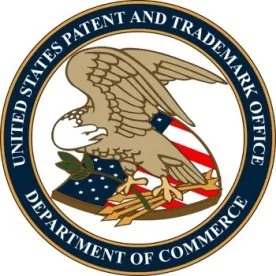The United States Patent and Trademark Office (USPTO) recently published a Request for Comments (RFC) on a proposed change to practice and procedures for motions to amend filed in America Invents Act (AIA) proceedings before the Patent Trial and Appeal Board (PTAB), as well as a proposed pilot program to implement the change. The proposed change, which was prompted by a USPTO study of the outcomes of motions to amend decided by the PTAB, along with public comments that included concerns regarding the grant rate of claim amendments in AIA trials, is intended to provide a more balanced playing field between Patent Owners and Petitioners with respect to the amendment process in AIA trials.
Under the proposed rules, Patent Owners would have 1.5 months from the institution decision to file an initial motion to amend, and Petitioners would have 1.5 months from the date of the motion to amend to file an opposition. Within one month of the Petitioner’s opposition, the PTAB would issue a preliminary decision on the motion. The preliminary decision would provide an initial evaluation of whether the motion to amend meets statutory and regulatory requirements, and the patentability of the proposed claims over the prior art of record. The preliminary decision would not be binding on the PTAB’s final written decision. In addition, all cross-examinations of witnesses providing direct testimony in connection with the motion to amend would occur after the preliminary decision is issued.
The current proposal contemplates two alternative courses following the PTAB’s preliminary decision. Under the first scenario, the PTAB’s preliminary decision indicates it would likely deny the motion because Patent Owner failed to meet a statutory or regulatory requirement and/or Petitioner demonstrated a reasonable likelihood of prevailing on the unpatentability of the proposed claims. When this occurs, Patent Owner would be permitted to either reply to the PTAB’s preliminary decision or submit a revised motion to amend responsive to the decision. If Patent Owner elects to file a reply, Petitioner may file a sur-reply and briefing is then closed. If Patent Owner chooses to file a revised motion to amend in response to the preliminary decision, Petitioner may submit an opposition to that motion, Patent Owner a reply and Petitioner a sur-reply.
Under the second scenario, the PTAB’s preliminary decision indicates it is likely to grant the motion to amend because the motion meets the statutory and regulatory requirements and Petitioner has not demonstrated a reasonable likelihood of prevailing on the unpatentability of any proposed claims. When this occurs, Petitioner would have the first opportunity to respond by filing a reply to the preliminary decision. Patent Owner would then be permitted to file a sur-reply before briefing is closed.
The RFC also seeks input on whether the USPTO should engage in rulemaking to allocate the burden of persuasion when determining patentability of substitute claims as set forth in Western Digital Corp. v. SPEX Techs., Inc. The Western Digital order specified that “the burden of persuasion will ordinarily lie with the petitioner to show that any proposed substitute claims are unpatentable” and that the “Board itself also may justify any finding of unpatentability by reference to evidence of record in the proceeding.” On this issue, the USPTO seeks public comment on (i) the circumstances in which the PTAB itself may justify findings of unpatentability, and (ii) how adopting the proposed changes to the motion to amend practice might affect the allocation of the burden of persuasion as set forth in Western Digital.
The deadline to submit written comments is December 14, 2018. It is expected that the USPTO will implement the pilot program shortly thereafter.
Further information regarding the RFC, including proposed timelines under the new procedure for motions to amend, is available via the USPTO website.





 />i
/>i

